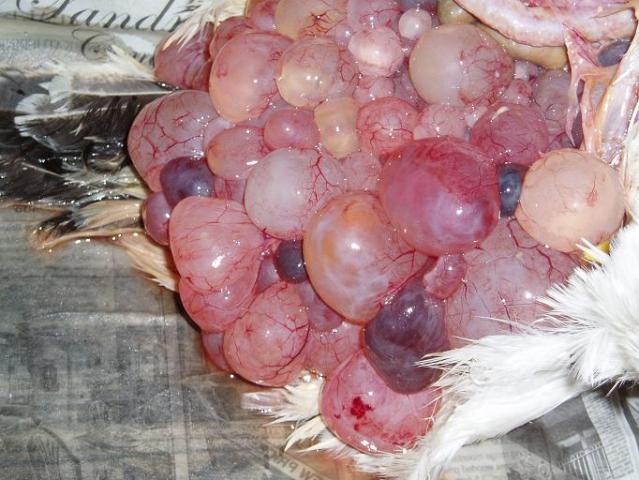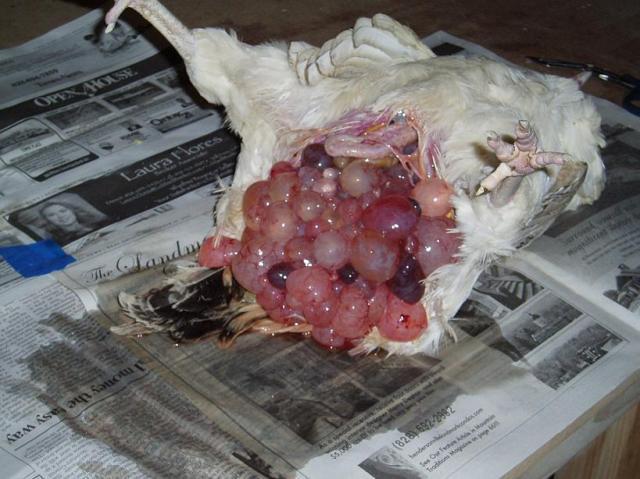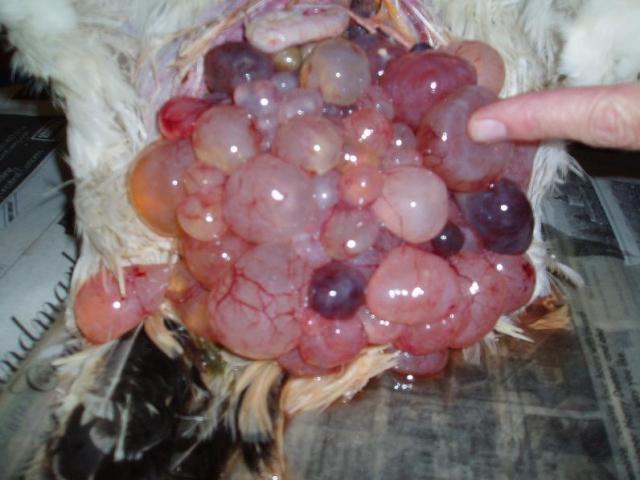the Old Rebel
Rest in Peace -2011
Hi All,
I am going to try to upload these pictures, because I have never seen anything like this. I have not been able to understand why we couldn't do anything to help a hen that is laying internally. Now I understand.
This is my Hope. She lived for a week after we discovered she was in trouble. But, obviously, she had been laying internally for quite awhile before that.
We did everything in our power to help her - two antibiotics, warm baths (she seemed to thoroughly enjoy them), keeping her on a heating pad with a heat lamp overhead (red bulb) (we're in the mountains of NC where it is still chilly at night and in the mornings and evenings), keeping her in the dark, giving her Poly-Vi-Sol, oiling her with olive oil in the mouth and in the vent - everything we could think of, but it didn't help. She died in my arms yesterday afternoon.
These pictures are graphic, but I had to see what everyone means by laying internally.



All I can say is "Wow". Who'd a thunk it?? They must internally lay for awhile before you even realize something is wrong. Wow.
Rest in peace, my little one.
I am going to try to upload these pictures, because I have never seen anything like this. I have not been able to understand why we couldn't do anything to help a hen that is laying internally. Now I understand.
This is my Hope. She lived for a week after we discovered she was in trouble. But, obviously, she had been laying internally for quite awhile before that.
We did everything in our power to help her - two antibiotics, warm baths (she seemed to thoroughly enjoy them), keeping her on a heating pad with a heat lamp overhead (red bulb) (we're in the mountains of NC where it is still chilly at night and in the mornings and evenings), keeping her in the dark, giving her Poly-Vi-Sol, oiling her with olive oil in the mouth and in the vent - everything we could think of, but it didn't help. She died in my arms yesterday afternoon.
These pictures are graphic, but I had to see what everyone means by laying internally.



All I can say is "Wow". Who'd a thunk it?? They must internally lay for awhile before you even realize something is wrong. Wow.
Rest in peace, my little one.




